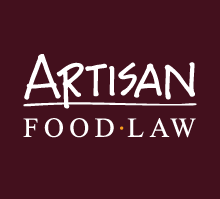The rise … or is it fall of artisan cheese?
It all rather depends on the country in which you live whether artisan cheese is in the ascendancy or under threat. Happily, in the UK the former is clearly the case, but the picture elsewhere looks mixed at best. Three contrasting news stories have appeared over recent weeks which consider the future of small scale raw milk cheese production and raise important questions.
The US Food and Drugs Agency (FDA) is well-known to be hostile towards raw milk cheeses and caused something of a stir earlier this year when it ruled against the centuries old tradition of aging cheese on wooden boards. The attention then turned to cheese imported into the US and when the American Cheese Society pointed out that over a half of all cheeses imported are aged on wood the result was one of the swiftest turnarounds ever by the FDA.
The FDA published clarification on the issue claiming reports of a ban on wooden shelves were not accurate. In an attempt to put the point beyond doubt, proposals were made in the US Congress to prevent any similar future action by the FDA. Bronwen Percival, buyer for Neal’s Yard Dairy and a leading authority on the science of artisan cheese, explained why wood shelving is an essential tool for the artisan cheesemaker and can safely be used for even ‘high-risk’ cheeses.
The incident served to illustrate the FDA’s antipathy toward raw milk cheese but more importantly underlined the uncertain regulatory framework with which US artisan cheesemakers have to contend. There was perhaps no great surprise when the Uplands Cheese Company in Wisconsin announced in early August that production of Rush Creek Reserve, an acclaimed artisanal raw milk soft Mont d’Or style cheese aged for 60 days, would cease. The reason? The regulations may be changed to require longer aging periods or introduce other impossible to work with requirements. The cheese making process could commence only to discover later that it had been made in breach of the regulations when the cheese was ready for sale. The FDA’s approach lacks transparency, is unpredictable and creates confusion. The same sort of confusion generated by the fiasco surrounding the aging of cheese on wooden boards with the result that making great cheese suddenly becomes a far too risky financial proposition.
A few short days later and closer to home “French Cheesemakers Crippled by EU Health Measures” is the headline. How can this be – the same EU rules apply either side of the Channel? On closer examination it appears to be more a question of hostile buyouts by ‘industrial fromagers’ and opposition to raw milk which are at the root of the problem than the health measures in themselves. France has a tradition of long-established regional raw milk cheeses crafted by dozens of artisan producers. The dairy processing industry, on the other hand, churns out cheeses bearing the same description but in volumes which cannot safely be produced using raw milk without the sort of care and attention which comes at a cost. In a production line churning out 250,000 soulless Camembert cheeses a day the milk has to be pasteurised to maximise profit.

In the UK the health of artisan cheese making, raw milk and otherwise, derives from the burgeoning number of dedicated producers of both traditional cheeses and the many who have developed new and exciting cheeses. The dairy processing industry has not, for the time being, set out to imitate these cheeses although preaches the pasteurisation message. The outcome is that “Cheese making in the UK is at an all-time high” headlines alongside the claim that more varieties of cheese are being produced by artisans cheesemakers in the UK than in France. There is no doubting that the range and quality of artisan cheese in the UK has never been better.
What can we learn from this situation? Quite simply we must guard against what is happening in both France and the US. The dairy industry’s resistance to the production of Stilton using raw milk is but one example and Defra’s decision on whether it may be permitted in future is now long awaited. The Food Standards Agency’s (FSA) review of controls over raw drinking milk may not directly affect raw milk cheese production, but if the FSA succumbs to industry demands for pasteurisation such restrictions may come a step closer.
What drives the FDA appears to be a lack of knowledge and understanding of the science of raw milk cheese, how else is the paranoia over wooden shelves, lack of transparency and inconsistency to be explained? This is one reason among many why the recent successful Kickstarter campaign to translate the ground breaking practical guide to raw milk microbiology written by a group of French scientists into English is so important. Bronwen Percival, project coordinator, explains:
“… the authors show how protecting the natural diversity of carefully produced raw milk is not only crucial for maintaining the identity and flavour of cheese, but also promotes a barrier effect that can help to protect against the growth of pathogens. Rather than subverting modern food safety targets, this approach may actually help cheese producers to achieve them."
In any argument, education is one of the most powerful tools at our disposal – a sharing of knowledge and understanding is central to stopping real cheeses being regulated out of existence. The guide is also crucial to the development of tomorrow’s raw milk cheeses of character and distinction … and the continued rise of artisan cheese!





